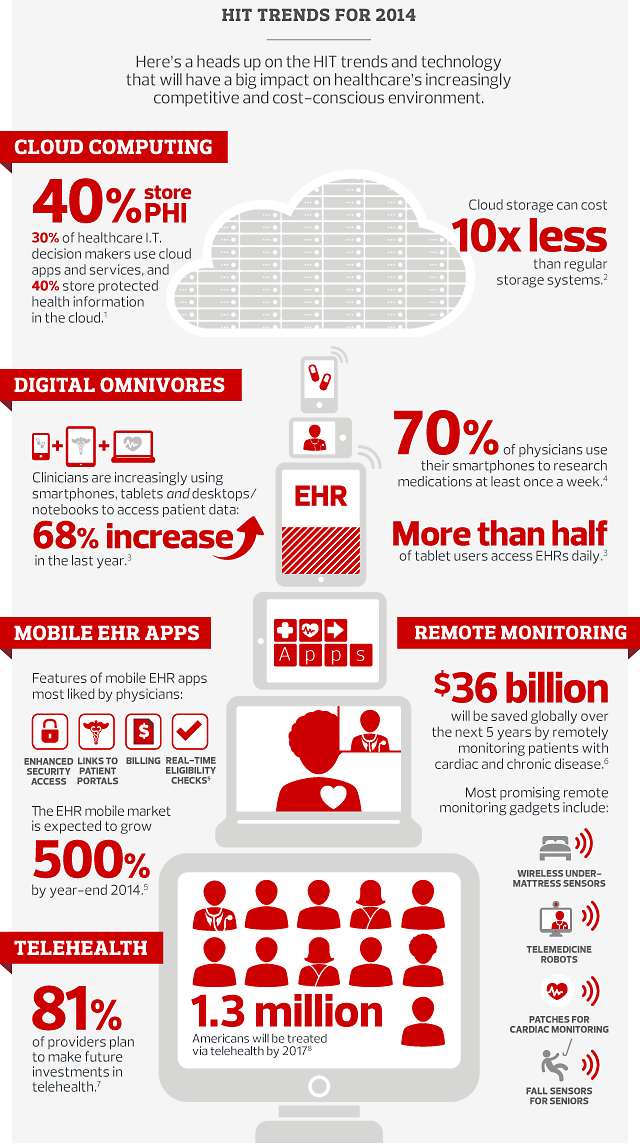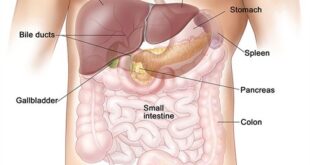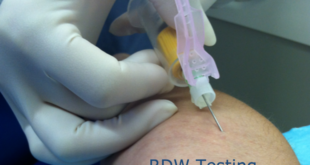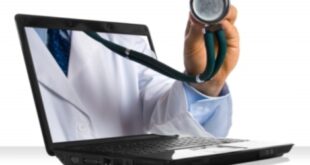Read Healthcare IT tends 2014 with looks at future HIT trends in the health technology industry. With the national focus of Health Informatics, this article looks at future HIT trends in the health technology tends in 2014 in United States with the rollout of Affordable Care Act (also known as Obamacare) including Meaningful Use Stage 2 (MU2) and ICD-10 transition.
The health care industry is rapidly changing due to health care reforms, government policies and technological advancements. Below health technology predictions for 2014 will help you and your staff your in staying prepared for upcoming HIT changes.
Healthcare IT trends 2014 and Predictions
From key health IT trends like cloud computing and telehealth to a huge increase in mobile device use, technology is changing the healthcare world.
Patient Care and safety is what is aimed by the health care IT trends that are to become part of the health care industry in 2014. Technology advancement is expected to be part of the health industry and at the forefront in the delivery of health reforms. The health care IT trends are expected to be sophisticated, tech savvy to consumers aimed at streamlining costs and focus entirely on service delivery. The following are some of the trends to watch out in 2014 sure to enhance service delivery in the health care industry:

Health IT Cloud Adoption
More and more medical practices and providers will turn to the cloud EMR or Cloud based HIT solutions, allowing more scalability, security, accessibility and information availability when it comes to hosting HIT applications and data.
Although some Health care organizations are still skeptical of storing PHI remotely, a private cloud is far more secure than data locally stored.
The HHS.gov outlines that 69% of all individual cases affected by breaches have been from loss or theft of physical assets, 18% are from hacking or server theft, dispelling the idea that online theft lends itself to amplified breach numbers
Electronic Medical Records (EMR)
Advanced programing interfaces have been an invaluable tool in data storage, from using CPOE and e-RX. Patients as of 2014 are expected to have full access of their medical records through the use of online services. Doors will be opened both ways to allow patients have full access of their medical records unlike the current trend where only the medical practitioners have full access at any given time. To keep up with the changes, iHealth recently announced integration of their blood pressure monitor and scale with practice Fusion patient’s health records
Analytics Gather Steam 2014
Analytics Gather Steam is expected to rollout in 2014 thereby providing physicians with actionable information through body sensors and devices. This is a reliable invention as it will mostly benefit patients with chronic illnesses or those recently released from the hospital. Analytics Gather steam will allow combination of specific data and genomic information thereby enabling personalized medicine. Healthcare mobile Apps will also be making their mark with the beginning of the new year. The health care apps will be tasked to deliver health care services via mobile communication devices.
EMR on Mobile and Tablet
Tablets are normally viewed as luxury gadgets in the society. Tablets are set to take their position in the medical industry and will be highly used by Physicians in recording patient’s diagnosis and conditions. Tablets are quite small and portable thus allowing doctors to move easily with them wherever they go. The only challenge that they are sure to pose is the level of security and asset management they are able to provide. Many of the tablets in the market cannot provide the level of security highly needed to ensure full security of patient’s records.
Mounting pressure on BYOD
Bring your own device is a compelling opportunity that seems to be impacting both employers and employees in one way or the other. With BYOD employers get to enjoy the opportunity of using equipment’s they desire while employers stay clear of having to pay extraneous cost on them. The only challenge with BYOD equipment is that much will need to be done to ensure patient records don’t leave ones the employees walk out of the healthcare facilities.
ICD-10 Transition in 2014 October
ICD-10 is expected to come into full operation as of October 1 2014. ICD-10 will be essential in medical billing and coding aimed at ensuring the health industry is fully streamlined in the coding of different medical conditions to ensure payments are made in order and on time. The Shift to ICD-10 will come with its on challenges requiring provider organization to have competent IT personnel for its proper and efficient operation. Failure to fully implement the ICD-10 could result in high financial penalties.
KBM Group whitepaper list several additional interesting and actionable Healthcare Trends 2014 including Obamacare 2.0, Mobile health, Socialnomics and Customer centricity.
 Health & Care Information
Health & Care Information 

